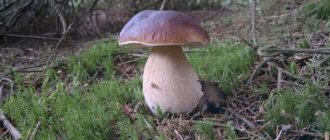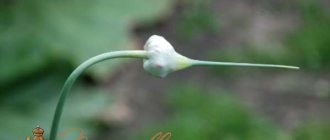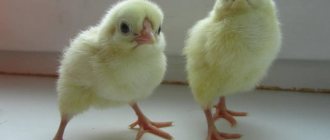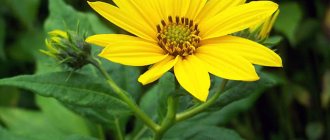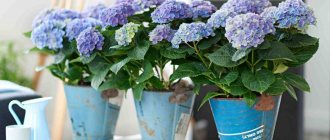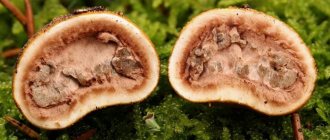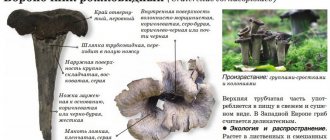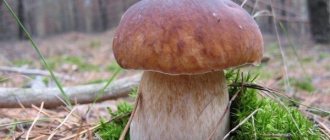Nutritional value
In terms of nutritional value, they belong to category 4. All representatives of this family are edible, but only 5 species are used for food; the rest have hard and fibrous flesh.
100 g of raw mushrooms contains:
- protein - 3.31 g;
- fats - 0.41 g;
- carbohydrates - 4.17 g;
- dietary fiber - 2.3 g;
- ash - 1.01 g;
- water - 88.8 g.
The energy value of 100 g of product is 34 kcal.
Oyster mushrooms are rich in vitamins B, PP, C and D and macro- and microelements: potassium, phosphorus, iron, copper, zinc and selenium. Thanks to such a rich composition, it is often used for medicinal purposes.
In addition, oyster mushrooms, unlike other representatives of the mushroom kingdom, do not accumulate toxins, therefore they are safe for humans. It is contraindicated for use by people with an allergic reaction to them, with diseases of the gastrointestinal tract, liver and gall bladder, since mushrooms are a heavy food.
How to distinguish oyster mushrooms from toadstools
Oyster mushrooms grown from mycelium at home can be eaten without fear of food poisoning. But, if you go to the forest to pick mushrooms, you should know where they grow in nature and how to distinguish them from their poisonous counterparts.
It is not difficult to distinguish a false mushroom from a real one for several reasons. Firstly, they are not very common in our forests. Secondly, they are much larger and brightly colored to attract attention.
There are two most common types of false oyster mushroom that are found in Russia (Figure 11):
- Orange – painted in bright and rich colors. A characteristic feature is the almost complete absence of a stem: the mushroom is attached to the tree directly by the cap. In addition, they have a rather unusual smell. Young specimens smell like melon, and mature ones smell like rotten cabbage. The families are large, grow mainly on deciduous trees, and look very beautiful, which is why they are often used in landscape design.
- Wolfsaw leaf can be found on dead wood of deciduous and coniferous trees from June to November. The caps are cream or brown, grow sideways on the trunks, and mature specimens are covered with characteristic red spots. The smell is mushroom, but the flesh is very bitter.
Figure 11. Types of false oyster mushroom: 1 - orange, 2 - wolf sawfolium
All false species do not contain potent toxins, so they cannot cause death. However, they are not suitable for food because the taste is too bitter.
What does an oyster (ordinary) mushroom look like?
Oyster mushroom, or common oyster mushroom, is the most common type of these mushrooms (Figure 12). It is successfully grown at home, since this variety is unpretentious to temperature, humidity and other cultivation conditions.
She has a funnel-shaped cap, shaped like an ear. The skin is matte and smooth, with shades ranging from light gray to dark. The family grows from one mycelium and forms a dense multi-tiered cluster.
Figure 12. External features of the oyster (common) mushroom
In nature it grows on weakened deciduous trees and fallen trunks. In addition, it tolerates cold temperatures well, and although harvesting begins in September, it can last until November. Only young specimens are suitable for food, since old mushrooms have too hard flesh.
Varieties of oyster mushroom
There are 9 main varieties of mushroom:
- Oyster mushroom is an oyster mushroom, popularly known as oyster mushroom, plane tree or bun, of all members of the family - this is the most valuable and useful species. The cap of the oyster mushroom is colored grayish-yellow or brown, and looks like ears. In young oyster mushrooms the edge is bent downwards. The size of the cap can vary from 5 to 25 cm; the presence of mycelial plaque on the smooth surface is allowed. The leg is whitish, shaped like a cylinder, the length can reach 5 cm, and the diameter - 0.8-3 cm. The pulp is quite dense and elastic, but in overripe specimens it can be hard and with fibers. They go “hunting” in June and collect them before frost. They are easy to find on stumps and trunks of deciduous trees. You can also find oyster mushrooms on diseased trunks of birch, oak, aspen and even rowan.
- Autumn oyster mushroom (willow mushroom) replaces oyster mushroom. Mushroom pickers go for it in September - October. They look for colonies on the stumps of maples, elms, poplars, lindens, and less often aspens. The pig has a one-sided, elongated cap that changes color depending on the age of the mushroom. At first it is gray-white, later dirty yellow. The leg, if present, is very short and does not exceed 2.5 cm in length.
- Oak oyster mushroom is a less common but edible species that lives only on the trunks and stumps of oak trees. They appear in July–August. The rounded cap does not exceed 10 cm in diameter. This species is easily recognized by the folded edge of the cap, on which the remains of a white blanket hang. The surfaces of the stem and cap are covered with scales. The cap has a yellowish or cream tint. The leg is velvety, grows up to 10 cm in size, and has the shape of a cylinder. The leg can be attached to the cap either in the center or on the side. The flesh of the mushroom is slightly harsh, but has a pleasant aroma.
- Oyster mushroom horn-shaped or plentiful is a record holder for yield. This species has the largest colonies, which is why it is called “abundant”, and acquired the name “carob” because of its similarity to the shepherd’s horn. The cap has a funnel shape and is painted white, which darkens over time to a light brown tone, its diameter is from 3 to 12 cm. It is noteworthy that in young mushrooms the cap bends down at the edges, but over time it straightens and even turns up . The cap is attached to the side of the stem. They go for them at the end of May and are collected until mid-August. But you will have to look for them, since they like to settle in hard-to-reach places, windbreaks and dead trees. They often grow on the stumps of maples and elms.
- Pulmonary (spring, beech or whitish oyster mushroom) is one of the most common edible representatives of the genus, growing in natural conditions.
The cap is round in shape, can be tongue-shaped or fan-shaped, the size is on average about 6 cm, but there are also individual mushrooms with a cap size of 15 cm, the color is white or cream, but mature mushrooms can have a yellow tint. The edges are slightly cracked and turned inside out, with the edges much thinner than the center. The leg is white or with a grayish tint, reaching barely 2 cm in length. At the base it is covered with small villi. It grows on rotting trunks of fallen deciduous trees. Seasonality: from early May to late September. Mostly they bear fruit in groups fused at the base of the stem; individual representatives are less common. - Steppe (eryingi, royal oyster mushroom). Valuable edible mushroom. The mushroom cap has an oval or round shape in young representatives of the species, but with age it becomes flat and even funnel-shaped. The surface is red-brown, covered with small scales. The size of the cap can reach 13 cm. The stem is cylindrical, white, from 2 to 5 cm. The flesh is white, a brownish or pinkish tint is allowed. Distributed in the countries of Central Europe and Western Asia. It bears fruit exclusively in the spring months.
- Pink (flamingo) . Edible mushroom. The caps of young representatives of this species are painted in a beautiful pink, powdery or grayish-pink color. With age, the cap turns pale. Its dimensions can reach 5 cm. The leg has a whitish-pink tint, is short, slightly curved, small, no more than 2 cm. The pulp has a pleasant aroma, oily taste, and has a whitish-pink tint. Distributed in countries with subtropical and tropical climates.
- Covered or covered .
Due to its hard pulp, it is classified as an inedible mushroom. It received this name because of the peculiar film that covers the plates of the hymenophore. In young representatives of the species, the cap looks like a bud, but as it grows, it begins to encircle the tree trunk and takes the shape of an open fan. The surface of the cap is smooth and slightly sticky with moist radial stripes. The fruit body has a gray-brown tint. The leg is almost invisible. The pulp has a whitish tint, the smell is similar to the aroma of raw potatoes when cut, and has a rubbery consistency. Mushrooms grow singly and begin to bear fruit from late April to late June. They can be found on dried fallen aspens in mixed and deciduous forests. Distribution area: Denmark, Sweden, Latvia, Ireland and other countries of Central and Northern Europe. - Hat (ilmak, golden). A rare edible mushroom with an original aroma and pleasant taste. The cap is corymbose-shaped, the size can reach up to 10 cm, the yellow-lemon color is typical for young representatives, in mature mushrooms it fades and can even become completely white. The leg has a cream color, height - up to 9 cm. It grows in groups, some groups can reach 80 pieces, and settles on dry branches of elms. Fruiting occurs from May to October. Distributed throughout Asia and the North American continent, in Russia it can be found in the forests of Eastern Siberia, the Far East and the Primorsky Territory.
Features of the view
Oyster mushrooms are edible mushrooms, quite large in size. At least two other names are known: oyster mushroom and oyster mushroom. They grow both in natural and artificial conditions. In the wild - on trees, when cultivated - mainly in sawdust, straw, sometimes they are even grown in scraps of paper and cardboard.
Under natural conditions, they grow on the trunks of deciduous trees, although some species can also choose coniferous plants, and especially unpretentious ones settle on fallen trunks or old stumps. It is believed that forest oyster mushroom has an advantage over its cultivated counterpart in terms of taste and nutritional properties.
Outwardly, a young oyster mushroom resembles an auricle - the cap has a characteristic structure and curves that disappear with age, leaving only a slight waviness along the edge. The size of the cap is varied - from 5 to 15 cm. Variations in its color are also possible - from light brown glossy to gray, almost purple.
The leg is dense, short, shaped like a light-colored cylinder, smooth. The stems of young fruits are actively used as food, while mature ones are practically unsuitable for human nutrition.
You may be interested in:
Poisonous mushrooms similar to honey mushrooms: differences and differences (27 photos) One of the most common mushrooms in the middle climate zone is honey mushrooms. They are edible and...Read more...
Similarities between oyster mushrooms and other mushrooms
There are no poisonous mushrooms similar in appearance to oyster mushrooms in our country. However, there are mushrooms that are inedible, and they are very easy to confuse with oyster mushrooms.
For example, inexperienced mushroom pickers may confuse oyster mushrooms with wolfsbane. This is a bitter mushroom that is absolutely inedible due to its taste. His hat is small with a pronounced yellow-red tint. The legs are fused at the base and resemble the appearance of roof tiles. The smell of rotten cabbage is characteristic.
Oyster mushrooms growing on the ground
There are mushrooms of this type that grow on the ground - on tree roots and low stumps.
Royal
The royal species is also called “eryingi”. Compared to other representatives of this group, they are larger and have a light yellow or white fruiting body. They live on the ground, and the mycelium is located on the roots of trees, stumps, and not on trunks.
Royal oyster mushrooms actively grow and develop in the spring. At sufficiently high temperatures in the spring, you may be lucky enough to have your first harvest as early as March; in a more moderate and calm climate, they reach their peak growth by May. They are valued for their high nutritional value, excellent taste and high content of vitamins and proteins.
You may be interested in:
Appearance and description of false moss mushrooms (17 photos) In the autumn season, the variety of mushrooms can confuse inexperienced mushroom pickers, so it is necessary to carefully...Read more...
Stepnaya
Steppe oyster mushroom (Pleurotus eryngii) differs from its relatives in geography and place of growth. Unlike forest species, this species is found in nature in the steppes; it prefers plant roots rather than trunks. The cap has a diameter of up to 25 cm and a gray-red color; the leg is light, almost white, and can reach a height of 4 cm.
The nutritional properties of steppe oyster mushroom are well known - in its composition it is close to high-quality dairy products, for which it is especially valued by mushroom pickers. This species is collected in wastelands and pastures from spring to autumn.
Benefits of mushroom
Oyster mushrooms are a healthy mushroom. It is not for nothing that in folk medicine you can find recipes for drugs based on them. The mushroom helps with iron deficiency anemia and cardiovascular diseases. It increases the body's immune strength, and its optimal content of vitamins D and E has a good effect on the development of bone tissue.
Mushrooms remove radioactive elements and some antibiotics from the body; they are recommended for use by people with benign and malignant neoplasms. Those who want to lose weight should also pay attention to this product. It is rich in protein, and its fats and carbohydrates do not harm the figure.
Oyster mushrooms - description and photo
Oyster mushrooms
These are mushrooms in which the cap smoothly turns into the stem. The cap itself is solid, slightly thinner towards the edge, round or oval-elongated. The caps range in diameter from 5 to 17 cm, and occasionally 30 cm are found.
Coloring of oyster mushrooms
may vary depending on the species - gray, whitish, lemon yellow, ash-violet.
Mushroom stem
tapers towards the base, reaches 5 cm in length and 3 cm in width. The color of the legs is white, grayish or yellowish.
A young mushroom usually has elastic and juicy pulp
, as it ages, it becomes dry, hard and fibrous.
The spores are white, cream or pinkish in color, depending on the type of mushroom.
Is it possible to grow this type of mushroom yourself?
Oyster mushrooms are not capricious mushrooms, which is why they are cultivated all over the world. They do not require exorbitant costs to create optimal conditions for growth and generously reward them with a harvest. From 1 kg of mycelium, up to 4 kg of mushrooms are obtained. They are grown indoors or outdoors.
Mycelium is bought in a specialized store. High-quality seed material is white with orange and red inclusions. The temperature of the package with mycelium should not be higher than +20 °C. After purchase, it is placed in a cold place (+3...+4 °C).
As a rule, the following rules for storing mycelium are adhered to:
- stored for no more than a month at an average temperature of 0°C to -2°C;
- no more than 2 weeks at an average temperature of 0°C to +2°C;
- no more than 3 days at an average temperature of +15°C to +18°C;
- no more than one day at an average temperature of +20°C to +24°C.
Places of distribution and collection rules
The habitat of oyster mushrooms is primarily deciduous forests with a temperate climate. Oyster mushroom grows in the forests of Northern and Central Europe. But the steppe prefers wastelands and open areas from Western Asia and India through Europe all the way to the Atlantic Ocean. Lemon is found throughout the Far East and North America.
Remember!
There are general rules for choosing mushrooms. Young individuals, up to 10 cm in size, which have a delicate and smooth leg, are eaten. Older mushrooms, whose flesh has hardened and darkened, are not suitable.
Oyster mushroom is easy to cultivate at home. All it needs to grow is a relatively stable temperature of +17 °C and air humidity of about 70%. If it is possible to create such conditions in the garden, then oyster mushrooms will grow in the garden on stumps and snags. If the temperature is correct, the mushroom will grow within 3-4 days.
Methods of growing mushrooms
Oyster mushrooms can be grown in 2 main farming methods: intensive and extensive.
Intensive method of growing on bags
This is a method of growing in artificial conditions.
Preparing for landing
The main rule when working with mushrooms is sterility. The room is disinfected in advance with chlorine-containing substances, and instruments are treated with alcohol. The mushroom grower carries out all work wearing gloves.
The mycelium is removed from the refrigerator and allowed to warm to room temperature, and then crushed.
For 1 kg of mycelium you need to take 10 kg of soil. Barley or wheat straw, sawdust from deciduous trees or parts of corn are prepared for it (chopped stems, leaves and cobs are used). The material must be of high quality without signs of rotting or mold.
Having decided on the basis of the substrate, they begin to disinfect it. A wet or dry substrate is treated with steam, but the most popular method of heat treatment is boiling it in water for 2 hours. After time, the substrate is placed under pressure and cooled to +25 C°. The pressed mass is cut into pieces of 4-5 cm.
Mycelium is planted only in moist soil. You can determine whether a substrate is suitable or not based on its moisture content in the following way: compress it into a lump, if it is springy and water does not flow out of it, then it has the required amount of moisture.
Planting mushrooms
To plant mycelium you will need bags. You can buy bags that hold 10 liters or 5 liters of soil. Fill them out in two ways:
- The substrate and mycelium are laid out on a sterile surface and mixed thoroughly. They immediately fill the bags with it.
- Or they stack the components in layers. First, add 6 cm of soil, then 0.5 cm of mycelium and continue to alternate in the same sequence until the bag is full.
The bags are tied and cuts are made on them (1-2 cm) along the entire surface of the bag in a checkerboard pattern at a distance of 15 cm from each other.
The bags are hung or placed in such a way that air can easily penetrate them from all sides.
Now the main task of the mushroom grower is to create optimal conditions for the development of mycelium indoors. Humidity is maintained at 70-80%, the air temperature should not exceed +25 C, and inside the bag +30 C, otherwise the mycelium will die. The temperature is reduced with the help of fans; ventilation is prohibited at this stage. Wet cleaning is carried out daily.
After 3-4 days, in the cuts you can see white, thin threads of mycelium, which after 20 days will grow inside the entire bag, and a mushroom aroma will appear in the room.
Next comes the fruiting phase. The bags are moved to another room, away from living rooms, since fungal spores are a strong allergen and create new conditions for the growth of oyster mushrooms. Air humidity is increased to 90-95%, and the temperature is lowered to 10-15 C. The mushrooms are provided with 10-12 hours of daylight. To maintain high humidity, use humidifiers and spray the walls and floors, but so that water does not get on the bags.
When the caps appear, they are sprayed from above daily. At this stage, much attention is paid to ventilation of the room; it must be provided every 6-8 hours. Otherwise, the mushrooms will begin to rot.
The first harvest of oyster mushrooms is harvested after 1.5 months. The mushrooms are completely turned out of the soil, making sure that no part of the stem remains in it. It can become a breeding ground for pathogenic microorganisms, which should not be allowed. The mycelium produces crops up to 4 times in a row. The second wave of mushroom growth begins 2-3 weeks after the first harvest.
After the mycelium bears fruit, it is disposed of or used as fertilizer.
The yield of oyster mushrooms in open ground depends on weather conditions and is significantly inferior to the yield of mushrooms grown indoors. But the mycelium bears fruit in one place for up to 5 years.
Extensive growing method
This is a method of growing mushrooms in a natural environment.
The mycelium is grafted onto aspen, birch, linden, willow or poplar logs. To do this, they are well moistened with water and several deep cuts are made on the surface, where the mycelium of oyster mushrooms is placed and covered with moss or tree bark.
The prepared logs are carefully dug into the designated area on the site. It should be shady, well blown by the wind and the sun's rays should not reach it.
The “planted” logs are well watered and covered with film. If the weather is hot, they are watered daily. The first harvest will please you in 1.5-2 months. The mycelium also bears fruit up to 4 times per season, if you do not forget to water it.
At the end of fruiting, the logs are left in place and kept moist. With this care, mushrooms will appear the next year.
Growing at home
At home, oyster mushrooms are grown on a specially prepared substrate. Straw often plays its role. The main thing is that it is clean, not infected and free of unpleasant odor.
Before using straw as a substrate, it is best to subject it to hydrothermal treatment. To do this, it should be placed in a large container and compacted thoroughly. After this, you need to fill the container with warm water and additionally heat it over low heat to 70 ° C. At this temperature, the straw should be kept for at least 3 hours.
After draining the water, the substrate must be removed from the container and cooled. While the straw is cooling, you can prepare the planting containers and mycelium. Plastic bags are most often used as containers.
When planting, a layer of substrate is first laid out, and then a layer of mycelium is laid down. Then the procedure is repeated until the landing container is completely filled. In this case, care should be taken to ensure that the total proportion of mycelium in the container does not exceed 5%.
When breeding oyster mushrooms at home, you should remember the following rules:
- When planting, the mycelium must be distributed so that most of it is located closer to the walls of the planting container.
- The filled unit must be placed in dark rooms with a temperature not lower than 20 and not higher than 24 °C. Otherwise, the mycelium will die.
- The block should be sprayed with water from time to time.
If everything was done correctly, the first primordia will appear in about 3 weeks. These buds do not need to be watered. You just need to monitor the temperature in the room.
On the 3rd day after the appearance of primordia, they turn into adult mushrooms. However, they can only be collected after the edges of the caps are aligned. When picking, mushrooms need to be twisted out of the substrate or cut off at the very base. The next harvest can be harvested in 2 weeks.
How many mushrooms can you collect at one time? It all depends on the quality of the mycelium used during planting.
Where to get mycelium for planting? The easiest way is to purchase it in a specialized store. But if this is not possible, then you can take the mycelium from the forest and transplant it into specially prepared soil in a greenhouse. In this case, the mycelium cannot be covered with soil. When the soil is intertwined with mycelium, it can be used to breed oyster mushrooms.
Published on March 16, 2018 by samsonmain. The entry was published in the Edible section. Bookmark the permalink.
How to cook julienne in the microwave from chicken and mushrooms
How to cook fried potatoes with dried mushrooms
At what temperature do oyster mushrooms grow?
Artificially cultivated types of mushroom strains are conventionally divided according to the maturation of fruiting bodies:
- The winter variety of oyster mushroom was bred from frost-resistant species, such species are able to bear fruit at temperatures of 4-15°C. They are recognizable by their caps, which are colored gray or blue.
- The summer variety was introduced from Florida. They bear fruit at a temperature of 15-25°C. The fruit body is tender and fragile.
- All-season strains have been developed from pulmonary oyster mushroom. They bear fruit at temperatures of 6-28°C. Recognizable by the different variations of gray color in which the cap is painted.
What time of year do they meet?
There are many types of oyster mushrooms that naturally grow from spring to late autumn. But the common oyster mushroom prefers cool weather, so its fruiting season lasts mainly from mid-September to the end of November . The first oyster mushrooms may appear at the end of May and in the summer if the weather is cold, reminiscent of autumn, for a long time.
Important! Peak fruiting of the oyster mushroom occurs at the beginning of October.
Why are oyster mushrooms grown?
Oyster mushrooms are used primarily in cooking. The caps and legs are cooked separately as they require different cooking times.
In folk medicine, the mushroom is used to make a variety of decoctions, infusions and extracts that have anti-inflammatory and bactericidal properties.
Oyster mushrooms are also used in cosmetology, making face masks based on them. They have a beneficial effect on the skin, relieve irritation and signs of fatigue, and nourish it.
Oyster mushrooms, despite category 4, are healthy and tasty mushrooms, and the minimal cost of growing them under artificial conditions makes the product accessible to all segments of the population.
0
0
Copy link
When to collect oyster mushrooms in the forest
The season for collecting oyster mushrooms depends on its variety, climate of the area, and weather conditions. In general, they bear fruit from spring to mid-autumn. The traditional time for collecting oyster mushrooms in Russia is September–October. It is at this time that the autumn or late oyster mushroom bears fruit.
The ripeness of the mushroom is indicated by open plates, ready for sporulation; the fruiting body becomes thin and light.
One bunch can weigh up to 3 kg
